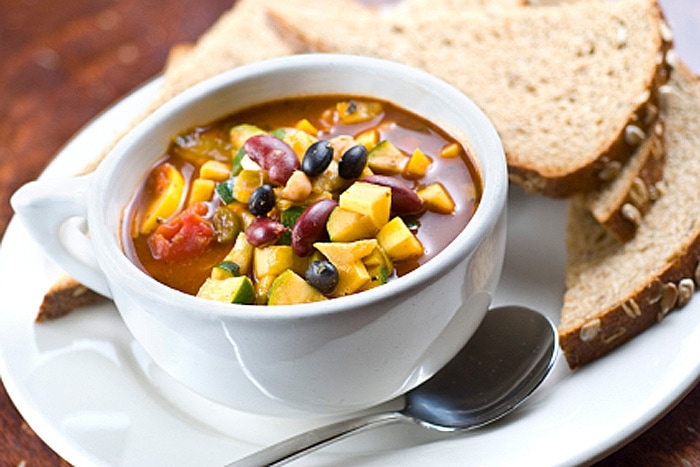
Written By: Christina Newberry
Reviewed By: Gloria Tsang, RD
Title: Registered Dietitian
Last Updated on:

October is Vegetarian Awareness Month, which makes it a great time to try a few meatless meals. You might even want to join the Meatless Monday movement – which encourages people to go meatless one day every week, decreasing overall meat consumption by about 15%. But if you pull the meat from your plate, what can you use to replace the missing protein?
Table of Contents
If you do plan to cut some of the meat from your diet, it’s important to replace the protein, which builds and maintains muscles, organs, skin, and blood, assists in energy metabolism and cell processes, and helps maintain immune function. It’s also the part of your meal that makes you feel the most full! The good news is that protein can be found in many types of foods – not just meat. From nuts to grains, and even vegetables, there are loads of options for protein in a meat-free meal. Check out the list below for some of the top non-meat sources of protein.

Yogurt and low-fat cottage cheese are great protein options for breakfast or lunch. For dinner, start with a cheese plate (hard cheeses have the most protein), or serve a light dairy-based soup (made with milk, not cream).
Nuts and seeds are easily sprinkled on a salad dish. Instead of a shredded chicken salad, make a meatless salad by preparing your vegetable portion as usual. Then sprinkle some chopped nuts or whole seeds on top of your salad to add some protein power.
Tofu works very well in stir-fries and other Asian dishes, but you can also cook it on the grill. Marinate your tofu “steaks” just like you would meat, then sear on all sides.
Lentils are great in hearty soups, and beans can be used to cook up a vegetarian chili. Or, try serving hummus as an appetizer, or even as a replacement for butter on your dinnertime rolls.
Many whole grains can be cooked and used in place of pasta or rice, giving protein power to what’s traditionally thought of as a high-carb dish. Top with your favorite (non-meat) sauce, and enjoy!
Protein can also be found in many vegetables, but not in the quantities as the items in the list above. Asparagus, broccoli, kale, and other dark-green vegetables offer the most protein from the vegetable family.
While meat is certainly what most of us think of when we think of protein, you can add protein to your diet through a variety of non-meat sources. So don’t be afraid to skip the meat once in a while, or even try out Meatless Mondays. Just add some of the non-meat sources of protein from our list to your meal for a satisfying, protein-rich, meat-free meal.
Alumni: University of Victoria – Christina Newberry is a writer and editor whose work has appeared in national and local magazines and newspapers. With a Bachelor’s degree in English and Anthropology from the University of Victoria and a Journalism Certificate from Langara College, Christina brings keen curiosity and the love of a good story to her work with HealthCastle.com.
Christina is a passionate traveler and urban gardener with an interest in vegetarian eating and making good, tasty food from scratch. Sharing lessons learned from her own experiences, Christina writes about lifestyle topics for HealthCastle, with a focus on eating well at home and on the road.
, beans, dairy, lentils, lose that weight, millet, nuts, protein, quinoa, seeds, soy, tofu, vegetarian, whole grains